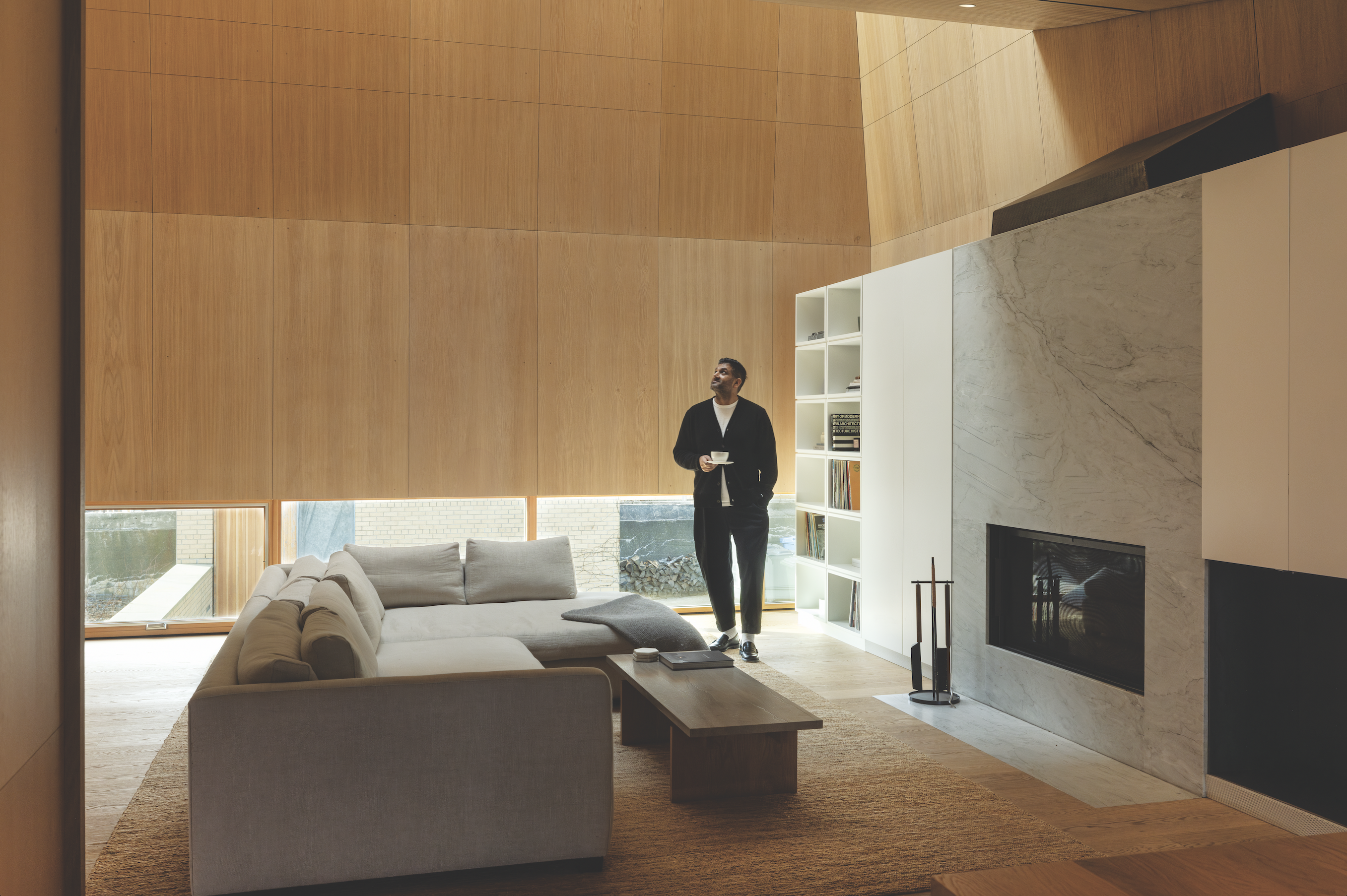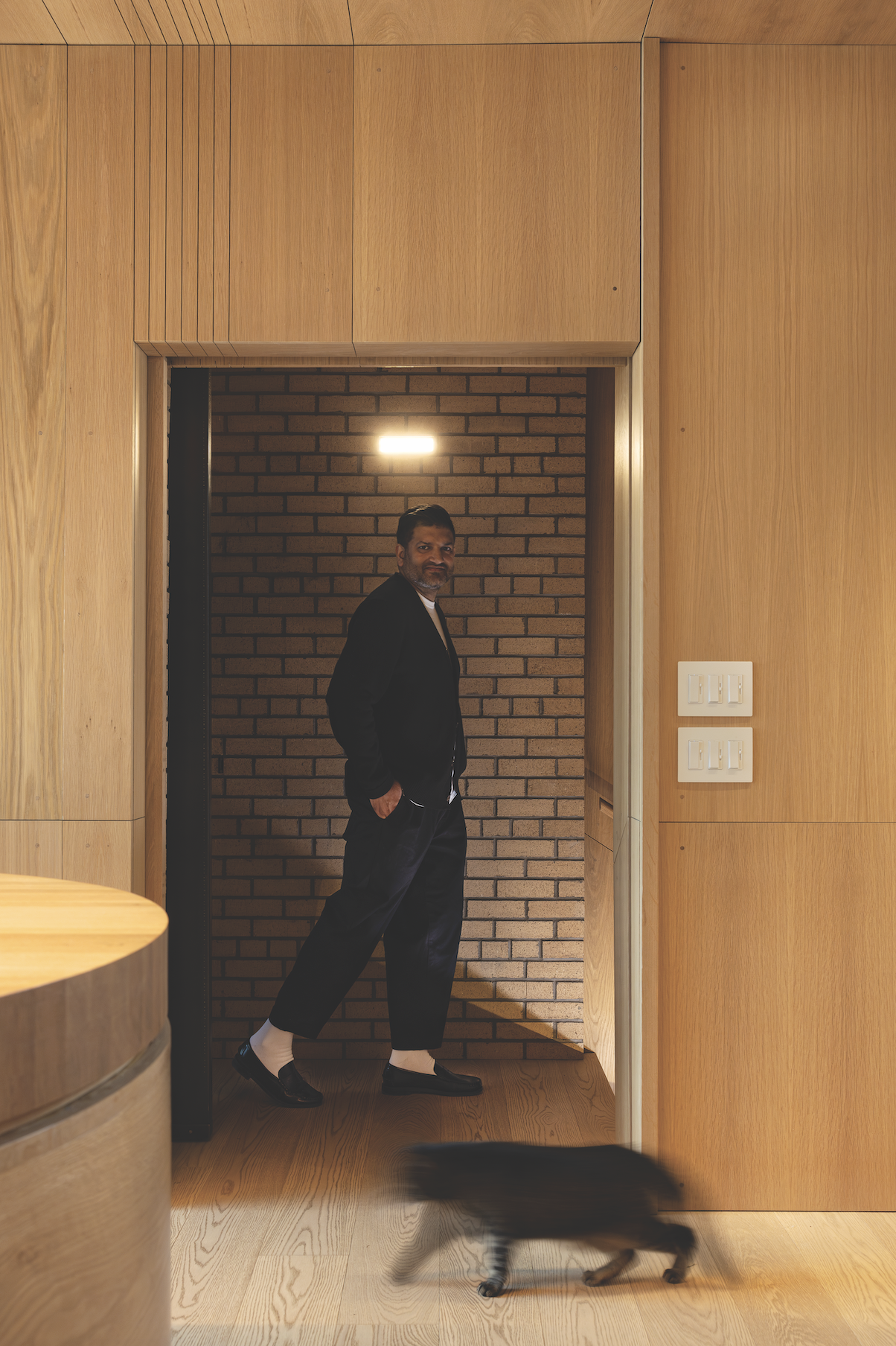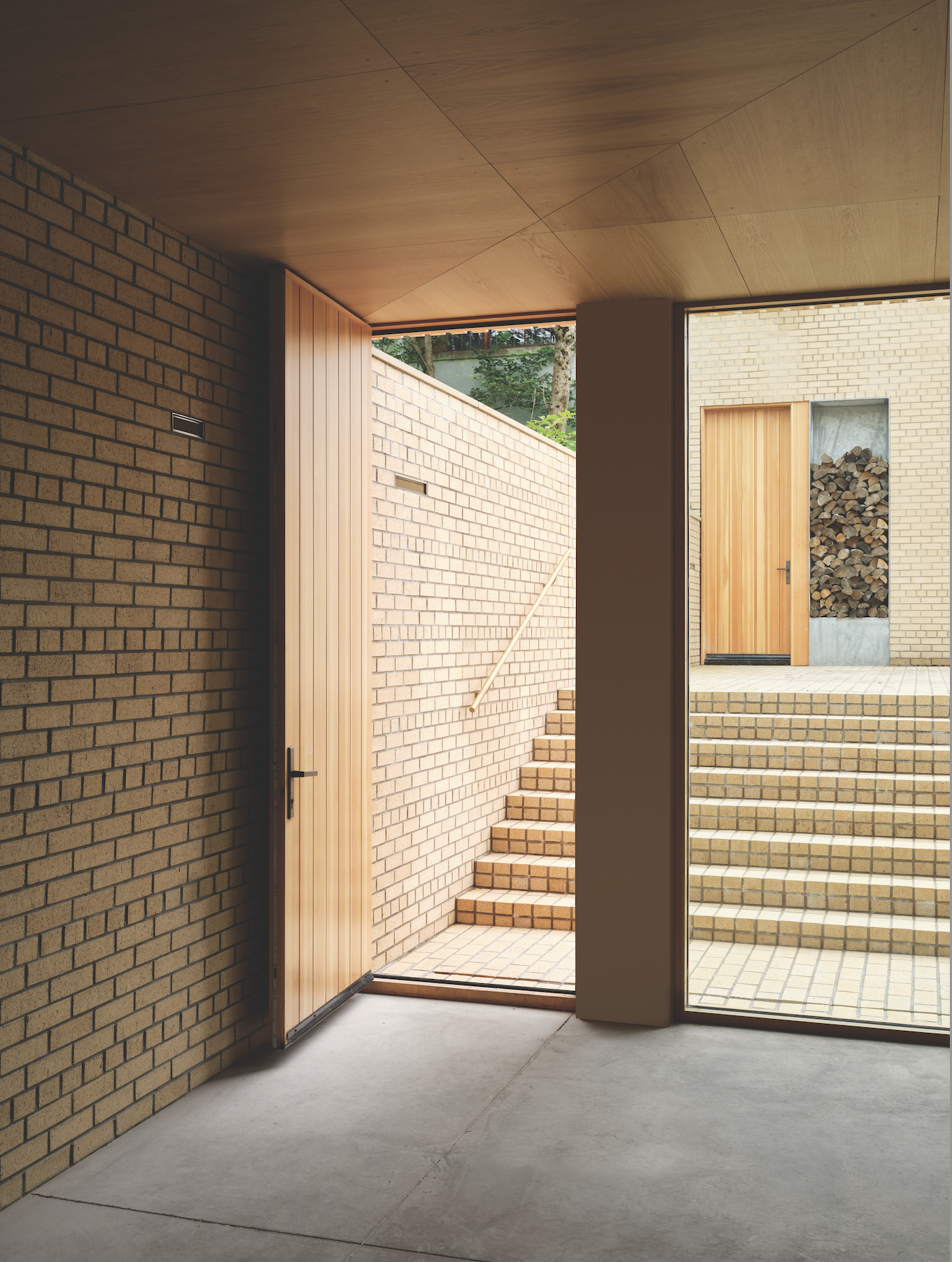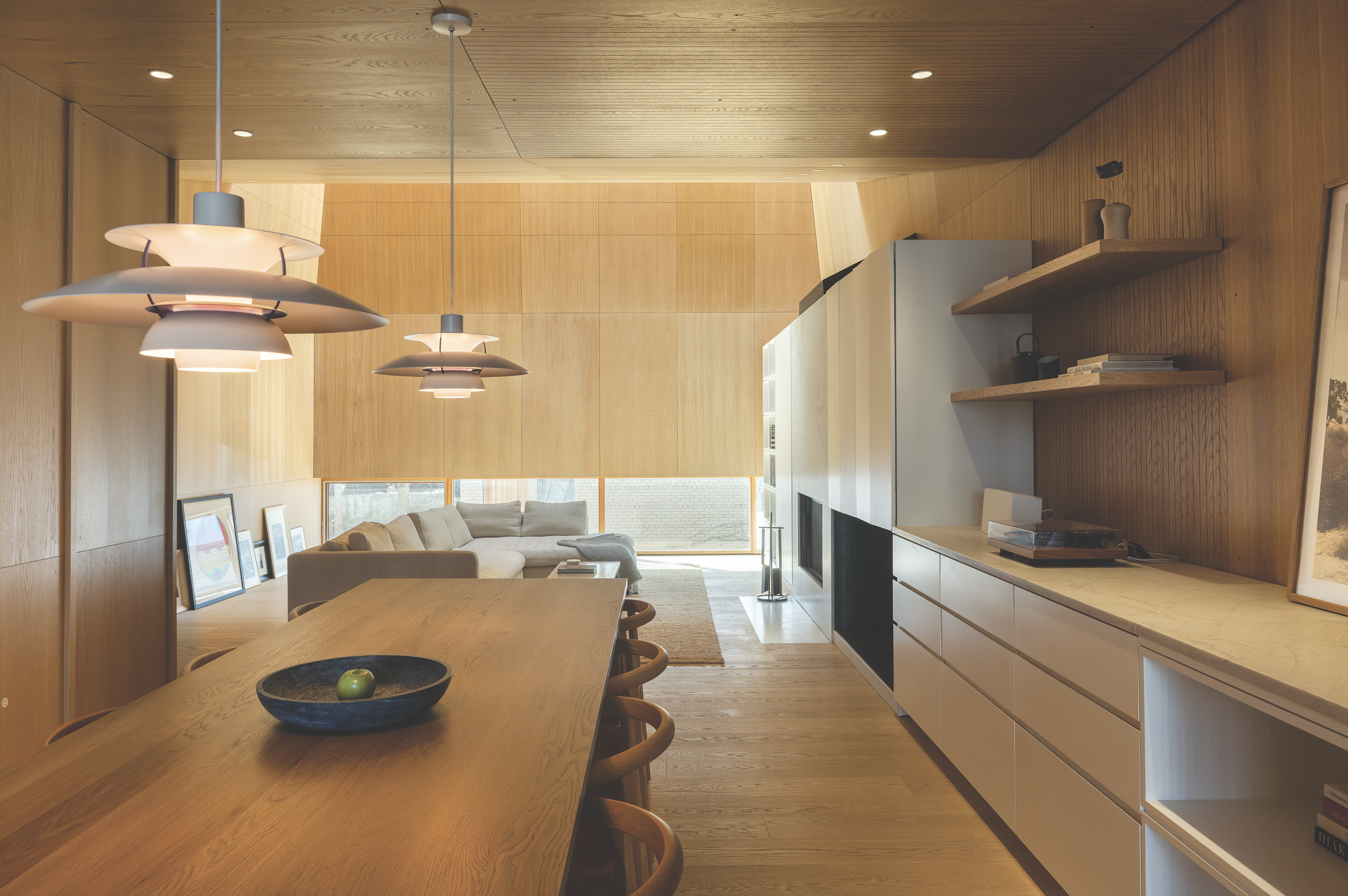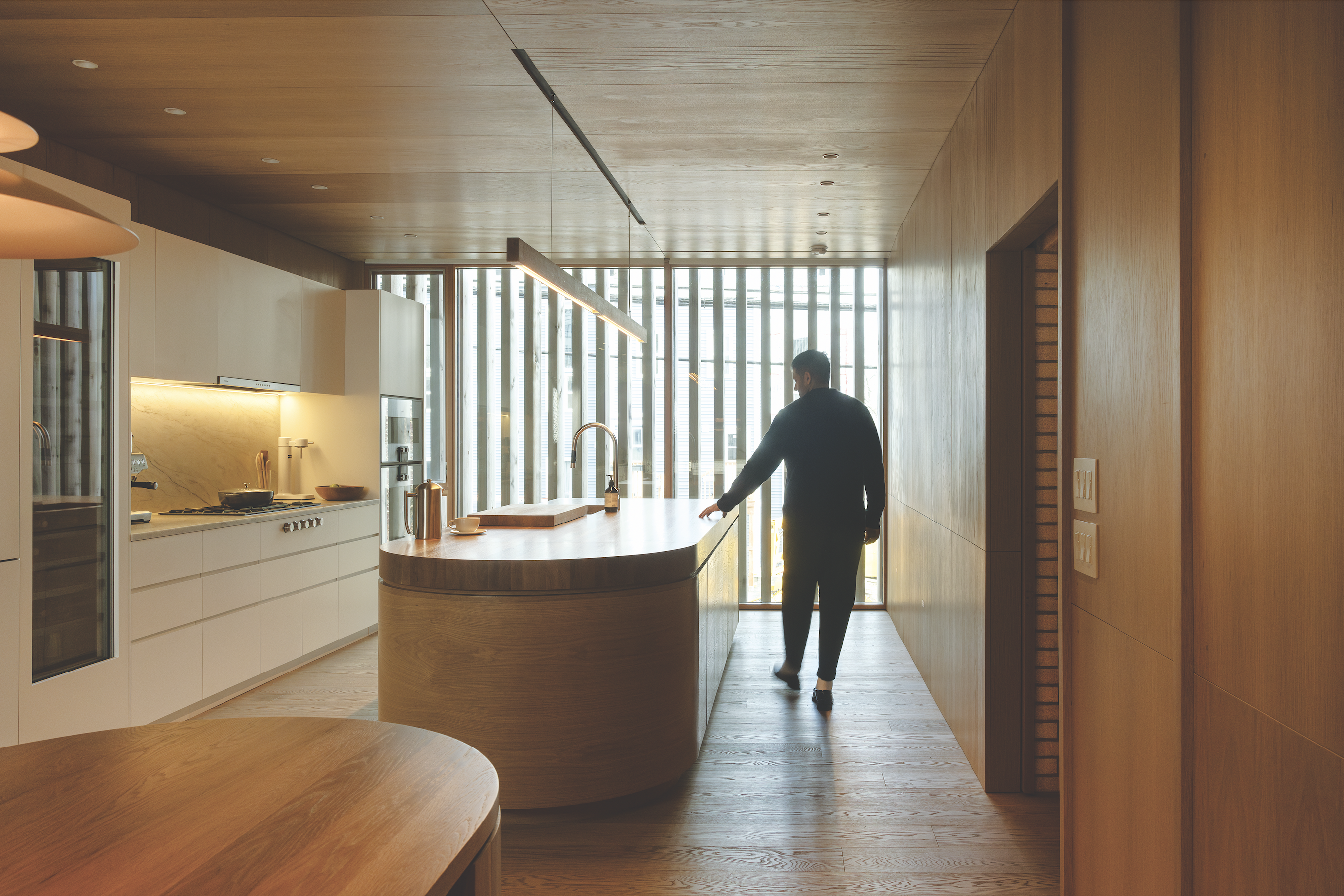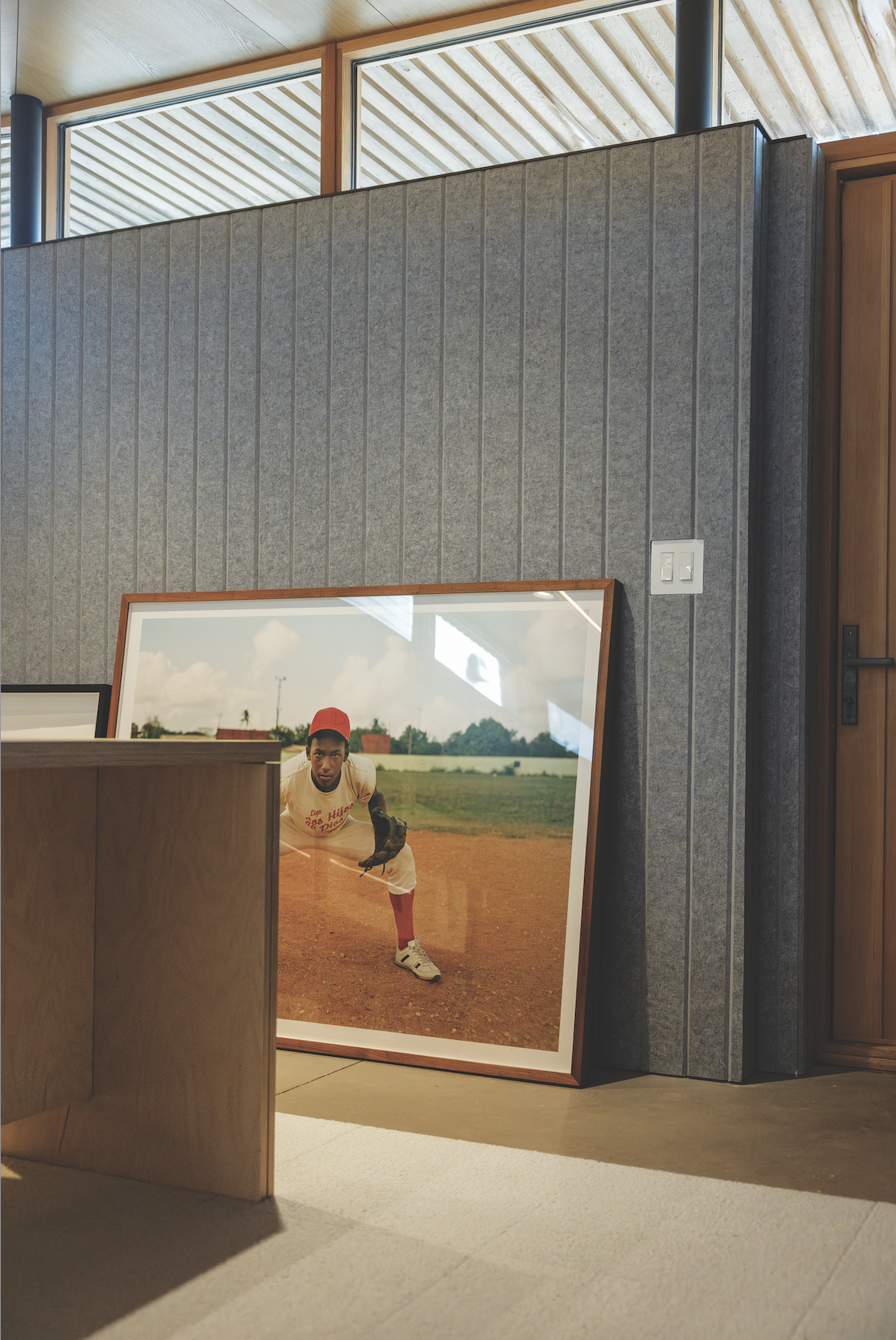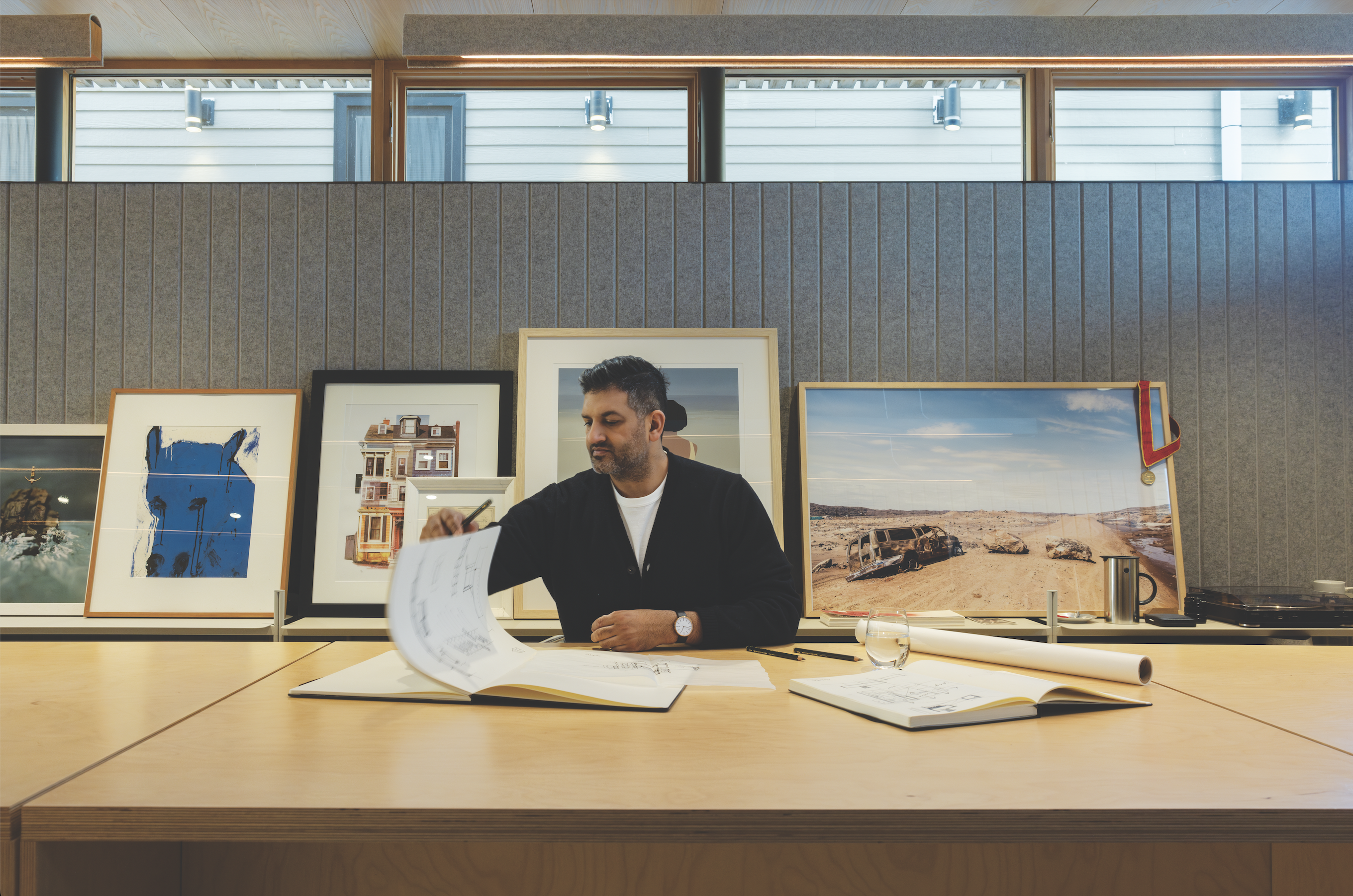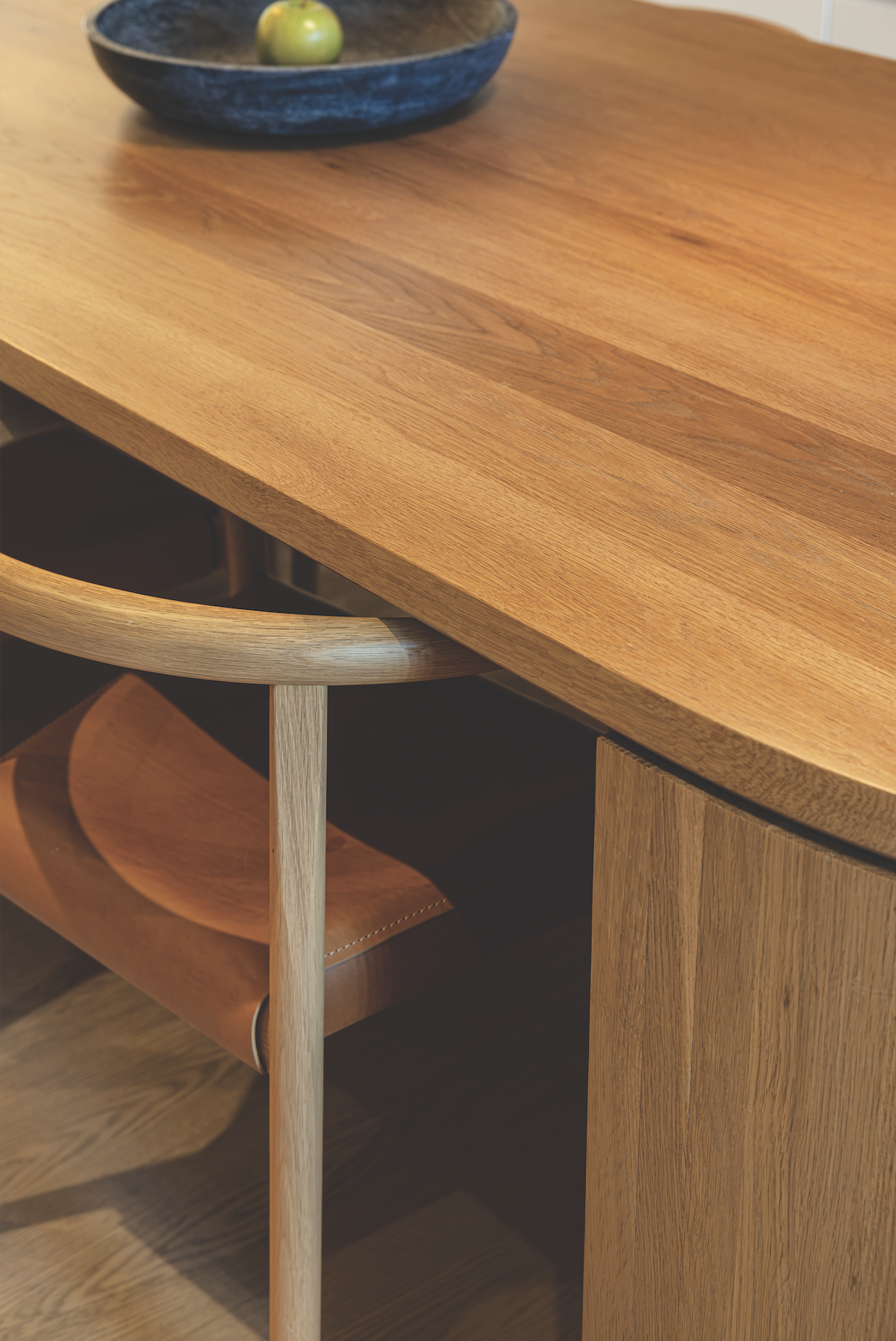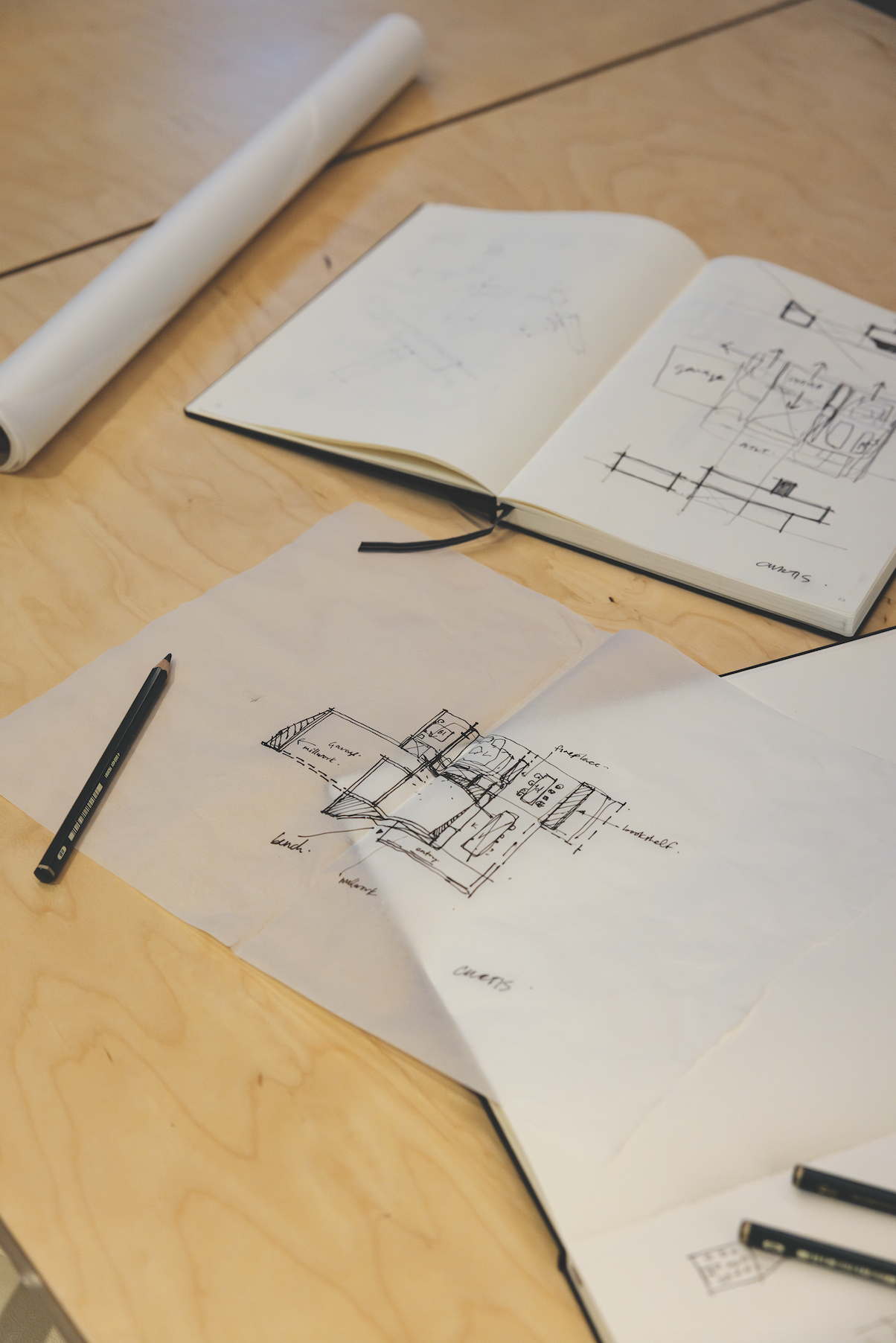It was never in architect Omar Gandhi’s plans to build his own house. But in 2019, rebuilding his life after a divorce and living between condos in Toronto and Halifax with his son Adrian, a vacant lot came up for sale in the latter city that piqued his interest. It was a narrow, 20-foot-wide plot of land in Halifax’s hip North End, adjacent to a longstanding African-Nova Scotian barbershop.
“The property was quite affordable, but people thought it was too narrow,” Gandhi explains. “I kind of took that as a challenge.”
The architect, who’s been in the industry for two decades and whose notable work includes the new Peggy’s Cove viewing platform and Toronto’s Prime Seafood Palace restaurant, envisioned building a 3,500-square-foot, three-storey building to house his design studio’s office on the ground floor and a private residence for Gandhi and Adrian, then eight years old, on the upper two floors.
By the time the property was nearing completion in the summer of 2021, Gandhi’s studio team in Halifax had grown too large to accommodate them in the house. So, the architect pivoted to using the 1,200-square-foot ground floor space as a home office space for himself and his new partner, Jolène, a child psychologist. “Adrian works there as well when he’s doing his homework,” Gandhi adds. It’s also one of Gandhi’s favourite spots for a morning coffee, overlooking a courtyard between the house and a separate garage. “That’s where I go in the morning when the sun is shining,” he says, “it’s a really peaceful part of the house.” The versatile space also serves as a meeting hub for working on community design projects, like the Blue House, a facility for African-Nova Scotians who are facing barriers to housing. The project, which was completed in 2022, involved renovating a vacant house and transforming it into a home for 11 community members.
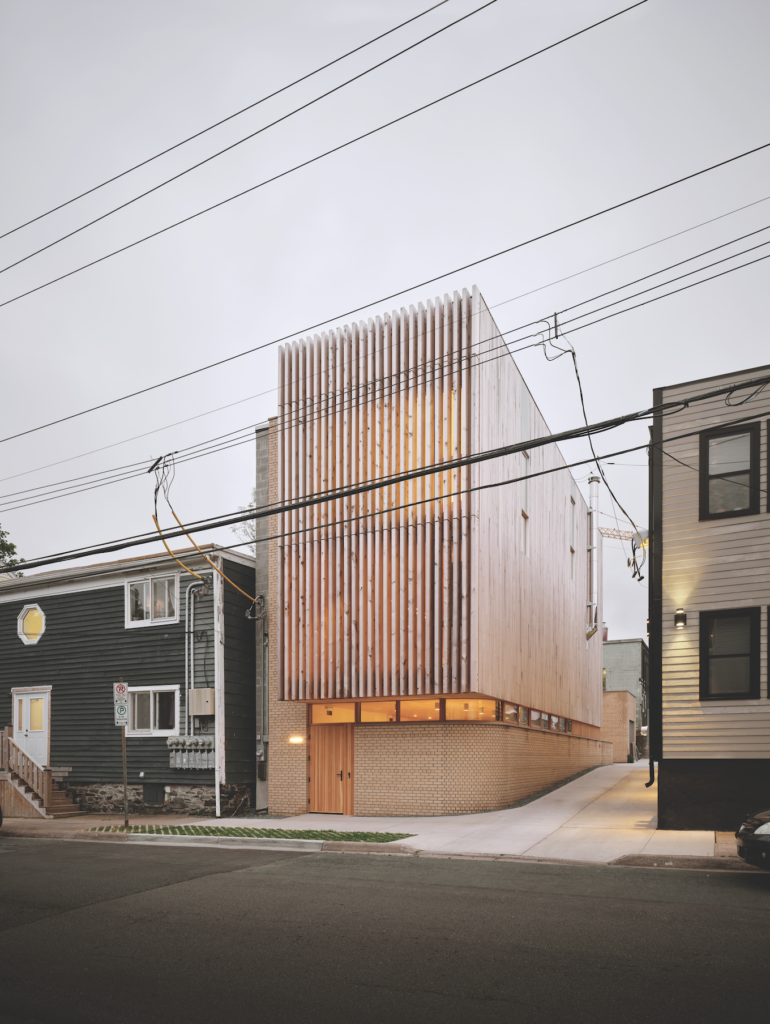
While the ground floor prioritizes community, the second level of the house is for the trio; a place for them to gather across the kitchen, living room and dining rooms. A clever use of space, like lightwells that allow sunlight to pour down multiple levels of the home, and what Gandhi describes as a “wood veil” over the kitchen area, bring natural light into the home while maintaining privacy from street level. The third and final floor has two bedrooms and two bathrooms. When designing Adrian’s room, Gandhi was limited by window placement, due to fire regulations, so he opted to create a window with a built-in desk that overlooks the lightwell.
Gandhi describes his home as a quiet and minimalist cocoon, ‘kind of like a warm hug’
All that natural light does a great job of highlighting the artwork that Gandhi and his partner display throughout their home. Instead of creating the oh-so-popular gallery wall favoured in many contemporary homes, the couple have opted to instead lean frames against the white oak walls in their second floor living room. The decision was made for a very specific reason. “I never really had the nerve to put holes in the wood to hang them,” Gandhi says. “It’s a very informal gallery space where pieces are propped up. It brings the focus of your eyes down a little bit.” Some of his favourite artworks on display include a piece from Mi’kmaq artist Jordan Bennet, Sun is Very Strong-Punamujuikús, and a landscape photo by Northwest Territories photographer Angela Gzowski, which are enjoyed by friends, family, and the family’s cat—appropriately named Dali.
Get the
Three from 3
newsletter
Join our global community of sharp, curious thinkers to receive a carefully curated email of the three most important things to read, see and do this week.
Listen and learn.
Tune into Third Culture Leaders, a podcast hosted by our co-founder and publisher, Muraly Srinarayanathas.
Explore how leaders skillfully navigate multiple cultural landscapes, leveraging their diverse backgrounds to drive innovation and change.
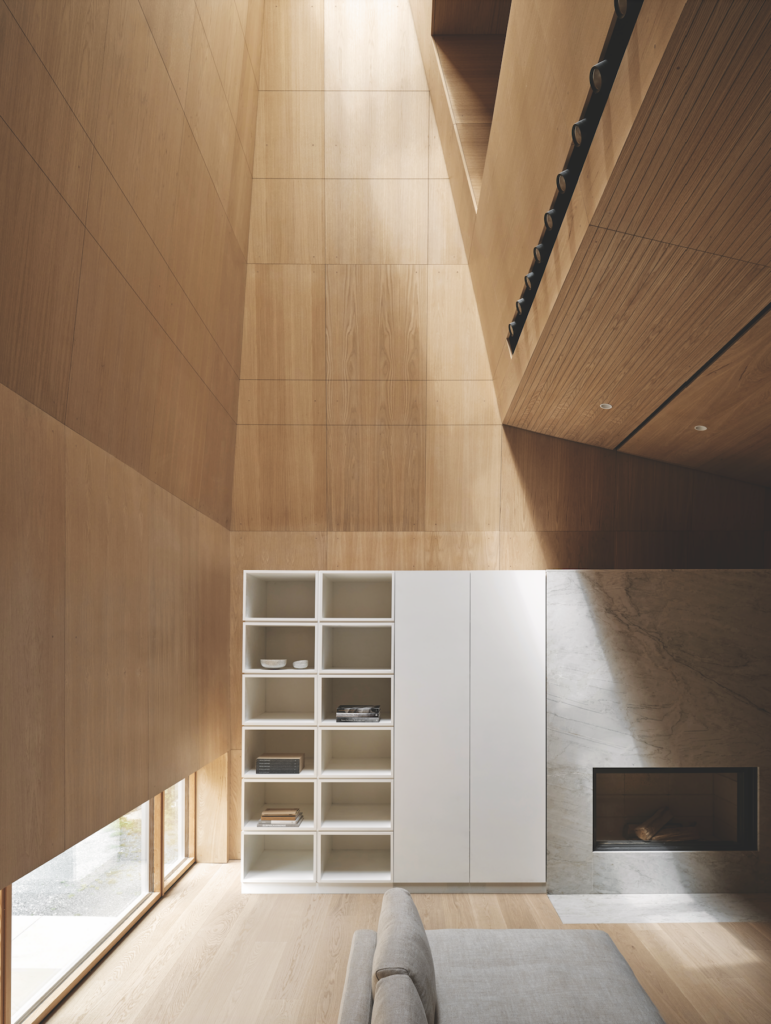
The house, which Gandhi describes as a quite and minimalist “cocoon, kind of like a warm hug,” stands in stark contrast to the Brampton, Ontario home where he grew up with his parents, who came to Canada from Navsari, in Gujarat, India in the 1950s and ’60s. “[Their home] was a place where a lot of people came over,” Gandhi says. “There would be a million cousins staying over, sleeping on the floor.” In comparison, Adrian is further away from his extended family. “Because we’re removed from Ontario and away from my family, [their visits are] something that he gets really excited about,” Gandhi says. But there are subtle ways that Gandhi keeps his family close while they’re away, like the Indian dishes he prepares in his kitchen. “The way that I’m connected to family, more than anything else, is food,” Gandhi says. While Adrian and Jolène enjoy the chicken curry and fish dishes that he whips up, recipes often from his mother, Gandhi prefers the kitchen to be his solo domain. “I purposely put no seating at the kitchen island so that people aren’t lingering there,” he says. “I love to cook, but I love my space.”
There’s a future in which Gandhi’s mom might be preparing her curries in the house more often. The architect designed the ground floor as a flexible space that could become a future grandparent suite if his parents decided to move in with him as they get older. “That’s one of those defining things in our culture, of looking after our elders,” Gandhi explains. “I wanted to plan for that.”
